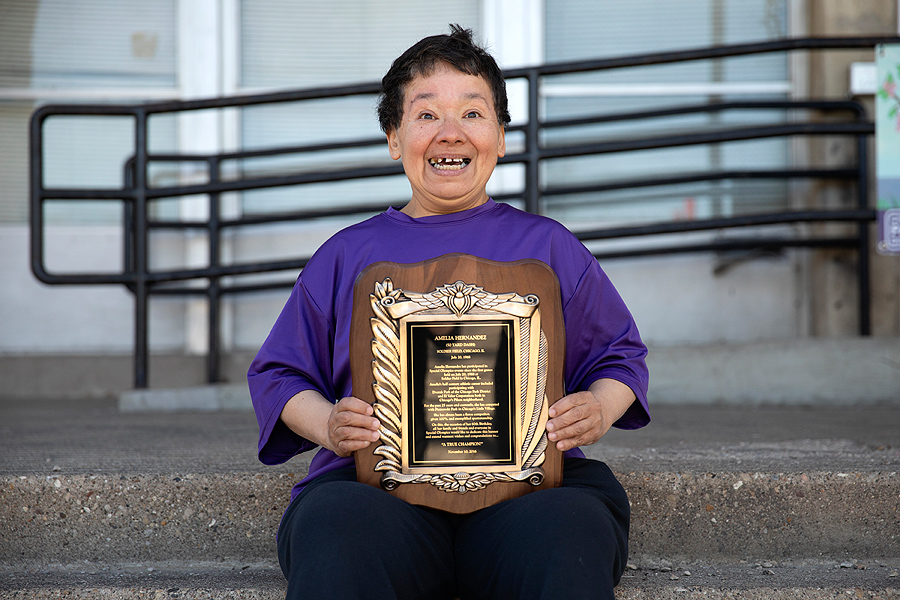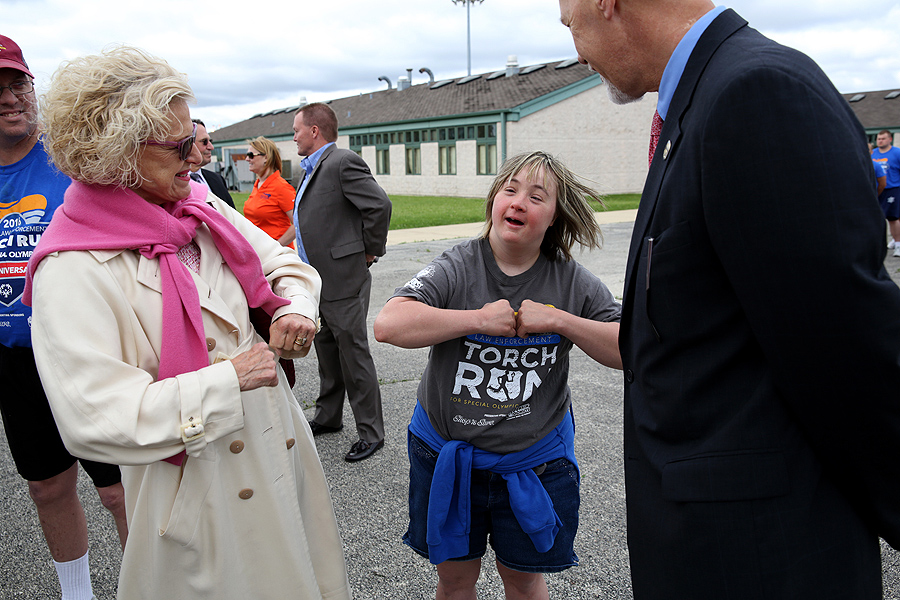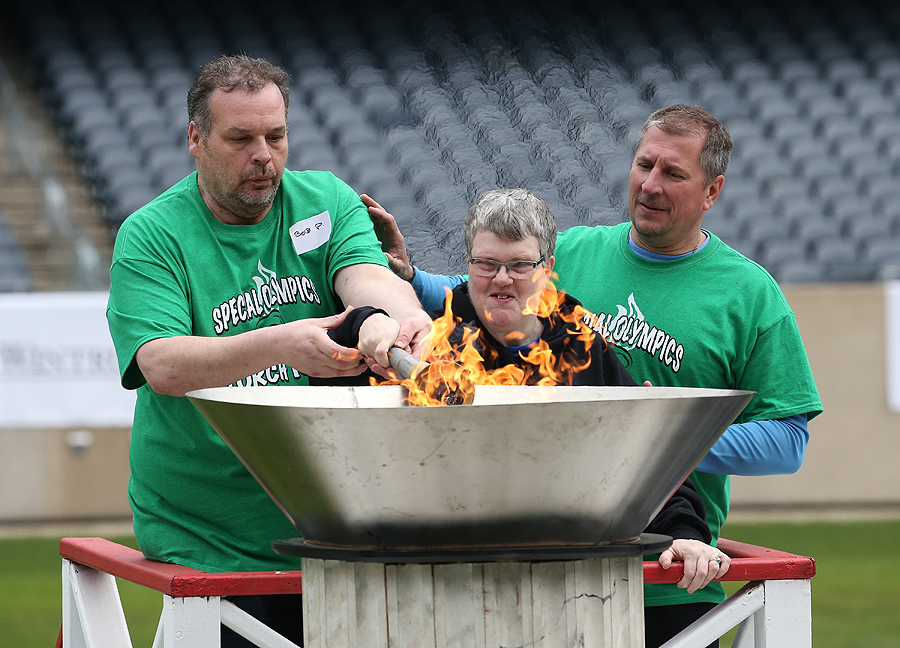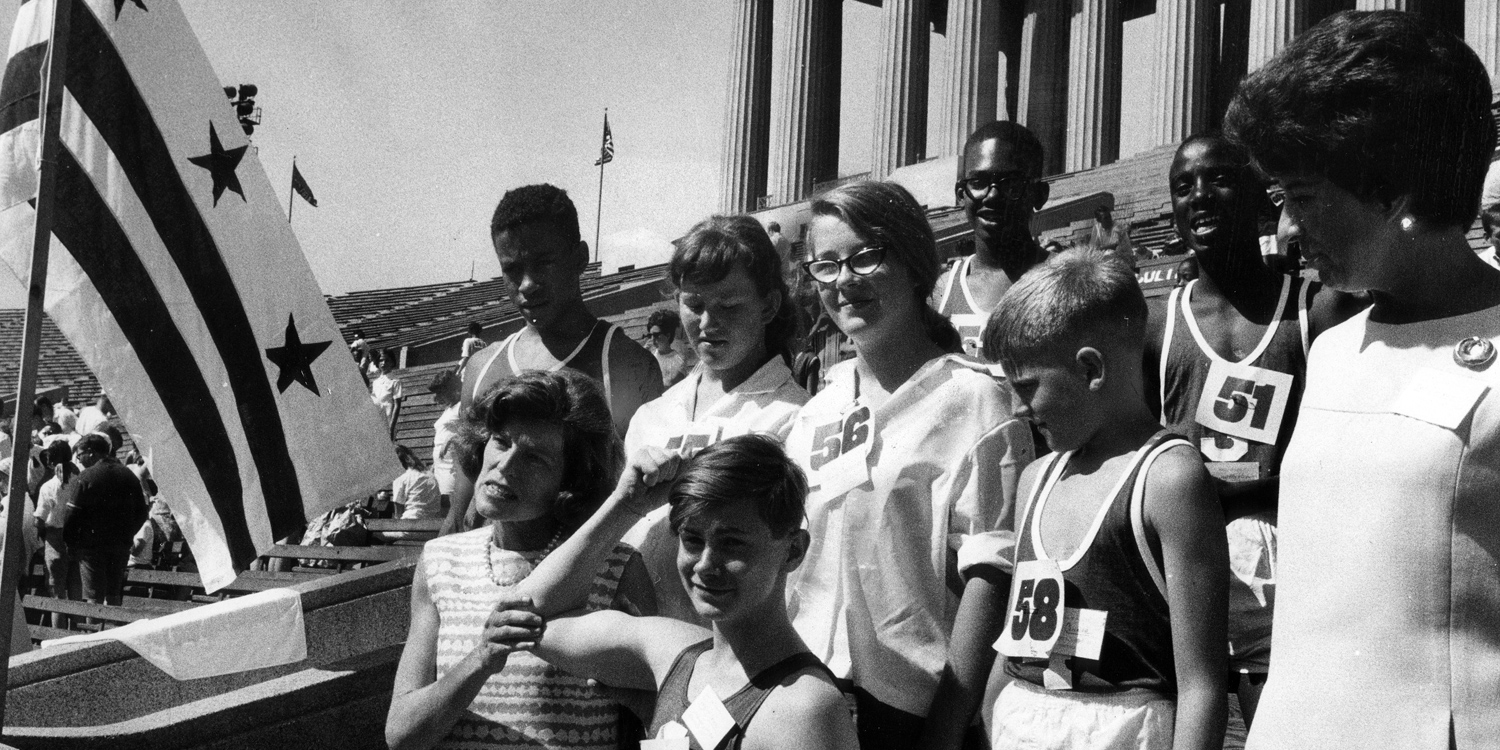On the first day of the Chicago Park District’s Special Education camp, no one showed. Anne Burke, 21-year-old physical education instructor, sat at her desk, staring at the peeling green paint on the walls. She had done everything she could to get the activity room at the West Pullman Park District ready, but there were no children anywhere. Down the hall, the gym was silent, the swimming pool was empty. The silver whistle around her neck seemed particularly useless. An hour went by, then another. By the end of the first day, the special education program seemed doomed to failure.
Before she married alderman Ed Burke and became an Illinois Supreme Court Justice, Anne Burke dropped out of George Williams College in Hyde Park and went to work at the Chicago Park District as a full-time phys-ed instructor. It was 1963, and she was 19. “It’s what I always loved—running, swimming, baton-twirling. Being with kids at the Park District, it was like I was in heaven.”

After two years of organizing successful Park District programs, Burke—born Anne McGlone, daughter of a Southwest Side barkeep and homemaker—volunteered to lead one of ten special education camps in 1965. That same year, the Kennedy Foundation, helmed by Eunice Kennedy Shriver, daughter of American aristocrats Edward and Rose Kennedy, gifted $10,000 to the Chicago Park District to set up physical education programming for children with intellectual disabilities. That initiative would go on to become the Special Olympics, which celebrates its 50th anniversary next week on July 20, with events beginning July 17. Burke now admits: “I had never seen a disabled person at any park program before. I thought it would be a challenge, but every time you had a gym class, you always had kids with different abilities.”
On the first day of camp, not one kid came. After several days without a single child appearing, Burke began to recognize what the camp was up against. “At the time, no one was willing to admit their child had a disability. People were afraid to bring their kid out of the closet. Their whole lives had been in the shadows. Now we were asking them to be seen in a public facility and a lot of parents worried what would happen.”
The stigma of having a child with an obvious intellectual impairment was so great that many parents were encouraged to institutionalize their children or keep them secluded at home. What Burke and the Chicago Park District were asking was nothing less than a fundamental shift in how people with disabilities were viewed in the community.
The fact that not a single kid had come was particularly poignant, as Burke had struggled with a learning disability she would later come to know as dyslexia. It was the reason she had dropped out of college. “I remembered being four, wanting to write my name from right to left but the nuns had to force me to do it from left to right. But at the time nothing of these things had names. No one talked about them.”

Burke refused to give up on the Special Education Program. She convinced the park supervisor, Randy Herman, to take out ads in the local paper to try and encourage participation. Finally an eight-year-old boy named Kevin O’Brien showed up, accompanied by his parents. Looking back Burke recognizes she was slightly uncertain, as she had never actually worked with a child with any kind of disability before. “He came up to me and gave me a hug and his affection was contagious.” Kevin had been diagnosed with Down’s Syndrome and didn’t speak much, so Burke began playing catch with him—trying to see what he was comfortable with physically. Kevin caught the ball and threw it back. It was a major shift for her as both an instructor and a person: “I realized he responded the way any other kid would, that he was the same.”
Word about the camp spread through an informal organization of parents of children with disabilities. Within several months, nearly a dozen children attended the program each day. Eventually, Burke had a new challenge: how to lead a class of children who had physical as well as intellectual disabilities and had been kept out of school.
It all came to a head one morning when Burke stood in front of the campers, blew her whistle, and asked them to line up in a circle. Almost none of them responded. Some of the kids had difficulties following directions while others didn't seem to recognize basic shapes. “I realized I had to teach the kids what a circle was, and so we began by drawing shapes, by looking at different kinds of circles.” Holding their hands with crayon and paper, Burke helped them trace the shape. It was not what she'd been expecting to do that day, but the possibilities for what the camp could become suddenly seemed much wider.
“It turned out to be about community and socialization. The children needed to be seen as people first.” Burke soon learned to approach each child as an individual with individual needs. “Sometimes it became a game of show and tell. I would have to use my body to express something or get the children to mimic me.”
Burke also began to look for ways to integrate the camp-goers into the larger community of the park district—and Chicago itself. Parents of the children began to take ownership of the program, requesting the activity room be repainted. “I also got the kids in other programs to become junior counselors, to assist me. If there was an adult doing laps in the pool, I’d ask them to help me work with the campers one-on-one in the water.”
Impressed by her vision of inclusivity, William McFetridge, president of the Chicago Park District, approached Burke about putting on a city-wide track meet for the special programming camps in 1967. Burke contacted William H. Freeberg, a widely-respected academic who had developed physical activities for people with mental disabilities at Southern Illinois University. Together they developed a plan to hold a sports day at Soldier Field. Freeberg also suggested Burke reach out to Eunice Kennedy Shriver for financial assistance. By then Shriver had been advocating for such programming for nearly a decade as her older sister, Rosemary, had been born with mental disabilities. Burke typed up a formal proposal and sent it to the Kennedy Foundation in Washington, DC. In January 1968, Burke got a phone call saying Mrs. Shriver was interested in meeting.
Burke, only 23 at the time, was overwhelmed. “The Kennedys were American Royalty. I had worked for President Kennedy’s campaign in high school and now I was going to meet his sister. I had no actual idea what the Kennedy Foundation did, all I knew was that they were involved in research into mental disabilities.”
Burke, a tall, thin, dark-haired young woman, went and bought a plain, A-line dress, trying to imitate Jackie Kennedy’s fashion sensibilities. She had only been on an airplane once before. Steve Kelly, head of PR for the Chicago Park District, accompanied her to Washington, but in DC, Burke was called into Mrs. Shriver’s office alone. When Eunice Kennedy Shriver came in with her wild head of curly hair, Burke saw she was wearing a similar dress. Putting on her glasses, Burke also noticed Shriver had runs in her stockings—a detail that allowed the nervous 23-year-old to finally breathe.

Shriver got to the point right away. “We are willing to help fund your project, but it must be national in scope.”
“I don’t know any programs in any other states,” Burke admitted.
“I have contacts in other states. I can take care of that,” Mrs. Shriver said.
In March 1968, the Kennedy Foundation announced it would donate $25,000 to the “Chicago Special Olympics.” The phrase came directly from the Chicago Park District nomenclature, based on their Special Education Programming.
With the support of William McFetridge, who used his contacts with local labor unions and businesses—carpenters, pipefitters, plumbers—Burke and the Park District built a swimming pool, a Teflon ice rink, and a basketball court in the middle of Soldier Field.
On the day of the event, July 20, 1968, one thousand competitors from more than 26 states and Canada faced off in a slew of physical activities, ranging from touch football to swimming. Eunice Kennedy Shriver attended, as did Captain James Lovell, astronaut and Special Advisor to the President on Physical Fitness. “You can talk about a swimming pool being built in Soldier Field, but then to see it, and to have Mrs. Shriver get me to send someone to go get her a swimsuit so she could jump in with kids, that was something.”
That same afternoon Shriver, without consulting Burke or the Chicago Park District, announced her plans for the Kennedy Foundation to host a Special Olympics every two years. “She saw that what we had done had worked, and so there was a model for it,” Burke says. With the Kennedys financial and political connections, the Special Olympics grew to become an international phenomenon, with nearly 4.9 million participants from all 50 states and 172 countries.
Fifty years later, the thing Burke is most proud of is that the Chicago Park District has remained the largest recreational facility for people with disabilities in the country. “It’s a movement that began here in Chicago, and will continue long after us.”



